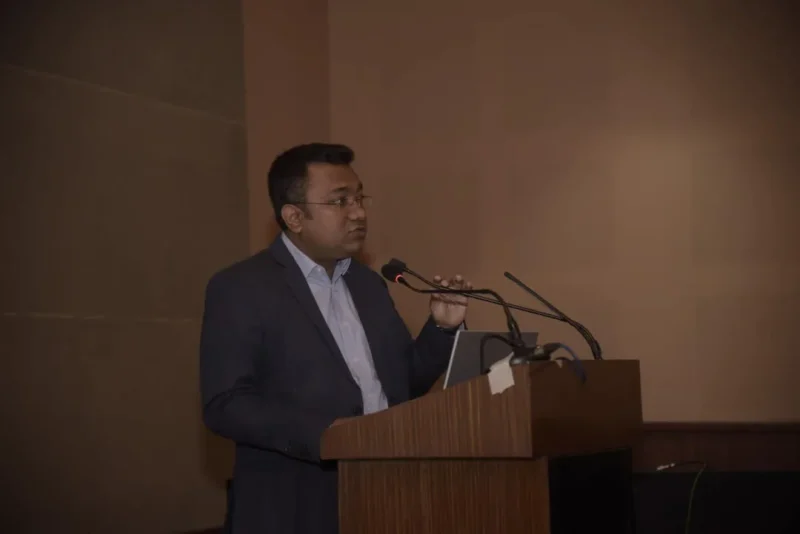Do Predistribution People Know How to Read? – People’s Policy Project

Report on Policy Mechanisms for Inequality Reduction
Executive Summary
This report analyzes the ongoing debate regarding the primary drivers of inequality reduction, specifically examining the roles of “predistribution” versus “redistribution.” The analysis highlights significant methodological challenges in current research that obscure the effectiveness of different policy levers. By framing this debate within the context of the United Nations Sustainable Development Goals (SDGs), particularly SDG 10 (Reduced Inequalities), this report clarifies the distinct and complementary roles of market-based interventions and welfare state systems in creating more equitable societies.
Methodological Debates in Inequality Research
The Predistribution vs. Redistribution Framework
The discourse on reducing economic inequality often centers on two distinct policy frameworks:
- Predistribution: Refers to market-shaping interventions that aim to reduce inequality before government taxes and transfers. Key mechanisms include wage scale compression through collective bargaining and unionization. This approach aligns with SDG 8 (Decent Work and Economic Growth).
- Redistribution: Involves the use of taxes and social transfers (the welfare state) to correct market-generated income disparities. This is a direct mechanism for achieving SDG 1 (No Poverty) and SDG 10 (Reduced Inequalities).
Critique of Current Research Methodologies
Recent academic studies, including Blanchet et al. (2022) and Mogstad et al. (2025), have been critiqued for employing methodologies that favor predistribution as the primary factor in reducing inequality. The analytical approach in these studies has been challenged on two main grounds:
- Exclusion of Non-Working Populations: The analysis is often restricted to working-age individuals (e.g., 18-64), thereby excluding children and the elderly. This omission systematically overlooks the populations most dependent on redistributive welfare systems.
- Reclassification of Welfare Benefits: Key components of the welfare state, such as unemployment, disability, and old-age social insurance benefits, are frequently counted as “market income” rather than as redistributive transfers. This accounting decision effectively defines a significant portion of the welfare state out of the redistribution category.
Impact on Policy Assessment for SDG 10
These methodological choices have profound implications for policy assessment related to SDG 10. By minimizing the measured impact of the welfare state, such research can lead to the erroneous conclusion that redistributive policies are less significant than predistributive ones. This skews the understanding of how nations like those in the Nordic region achieve their low levels of inequality and undermines the perceived importance of robust social safety nets, which are crucial for achieving multiple SDGs.
Policy Levers for Achieving Sustainable Development Goals
The Role of the Welfare State (Redistribution) in Advancing SDGs
A comprehensive and accurately defined welfare state is a cornerstone of sustainable development. Its functions are critical for achieving several SDGs:
- SDG 1 (No Poverty) & SDG 10 (Reduced Inequalities): Social transfers provide essential income support to non-working populations, including the unemployed, elderly, and disabled. This is the most important lever for reducing poverty and overall inequality across an entire society.
- SDG 16 (Peace, Justice and Strong Institutions): Robust social insurance systems, funded by comprehensive and fair tax structures (such as Sweden’s 31.42% employer-side social contribution), are a hallmark of strong and effective institutions dedicated to social protection.
The Role of Market-Based Mechanisms (Predistribution) in Advancing SDGs
Predistributive policies that shape market outcomes are equally vital for building an inclusive economy and achieving key development goals:
- SDG 8 (Decent Work and Economic Growth): Policies that compress the wage scale, such as strong unionization and collective bargaining systems, are fundamental to ensuring fair wages and decent work for all.
- SDG 10 (Reduced Inequalities): These mechanisms represent the most significant policy lever for reducing income inequality specifically among the working population.
Conclusion and Recommendations
A Holistic Approach to SDG 10
Achieving SDG 10 requires a comprehensive strategy that integrates both predistributive and redistributive policies. The evidence indicates a clear division of impact: market-based wage compression is the most effective tool for reducing inequality among workers, while the welfare state is the most powerful instrument for reducing inequality across society as a whole, which includes non-workers. An ideological preference for one framework over the other, often supported by flawed research methodologies, hinders the development of effective, holistic policy solutions.
Recommendations for Future Analysis
To ensure that future research provides an accurate evidence base for policymakers aiming to achieve the SDGs, the following recommendations should be adopted:
- Ensure Population Inclusivity: Analytical frameworks must include the entire population, particularly non-working groups like children and the elderly, to accurately measure overall societal inequality.
- Maintain Clear Definitions: A consistent and logical definition of the welfare state is required. Social insurance benefits must be categorized as redistributive transfers, not as a form of pre-tax market income.
- Promote Methodological Transparency: Research must be transparent about how tax systems, including employer-side social contributions, are accounted for, ensuring their redistributive effects are not misclassified as market-driven predistribution.
SDGs Addressed in the Article
-
SDG 10: Reduced Inequalities
This is the central theme of the article. The entire text is a debate about the most effective policies for reducing economic inequality, comparing “predistribution” (market-based factors like wage compression) with “redistribution” (welfare state taxes and transfers). The article explicitly discusses “Europe’s lower level of inequality” and the different accounting methods used to measure “inequality reduction.”
-
SDG 1: No Poverty
The article connects directly to SDG 1 by discussing the role of the welfare state in providing a safety net. It argues that social protection schemes are crucial for reducing poverty, stating that when a country creates “unemployment, disability, and old-age benefit schemes,” the result is that “poverty and inequality plummet.” This highlights the importance of social protection for the most vulnerable populations.
-
SDG 8: Decent Work and Economic Growth
The article addresses SDG 8 through its discussion of “predistribution” policies. It identifies key strategies for creating a more equitable labor market, such as the need to “compress the wage scale, such as through unionization and collective bargaining,” and to “Redistribute capital’s share… through a higher labor share.” These points relate directly to fair wages, labor rights, and decent work conditions.
Specific Targets Identified
-
Target 10.4: Adopt policies, especially fiscal, wage and social protection policies, and progressively achieve greater equality.
This target is the core subject of the article. The text is an in-depth analysis and debate on the relative importance of wage policies (“predistribution”) versus fiscal and social protection policies (“redistribution”) in achieving the low-inequality outcomes seen in European countries. The entire discussion revolves around which of these policy levers is most effective.
-
Target 1.3: Implement nationally appropriate social protection systems and measures for all, including floors, and by 2030 achieve substantial coverage of the poor and the vulnerable.
The article directly references the components of social protection systems. It critiques studies for miscategorizing or excluding “unemployment, disability, old-age, and leave benefits,” which are the exact mechanisms described in this target for protecting vulnerable groups like the unemployed, elderly, and disabled.
-
Target 10.2: By 2030, empower and promote the social, economic and political inclusion of all, irrespective of age, sex, disability, race, ethnicity, origin, religion or economic or other status.
The author’s main criticism of the studies cited is that they “remove nonworking people from the analysis,” specifically “children and the elderly.” This directly addresses the importance of ensuring the economic inclusion of all people, regardless of age or working status, when measuring and addressing inequality.
-
Target 8.5: By 2030, achieve full and productive employment and decent work for all women and men… and equal pay for work of equal value.
The article’s recommendation to “compress the wage scale” through mechanisms like “unionization and collective bargaining” is a direct strategy for achieving more equitable pay structures, which is a key component of this target.
Indicators Mentioned or Implied
-
Gini Coefficient (Implied)
While not explicitly named, the entire discussion of “inequality,” “lower level of inequality,” and “inequality reduction” implies the use of a standard statistical measure of income distribution, the most common of which is the Gini coefficient. This is the underlying metric for the debate presented in the article.
-
Labour share of GDP (Indicator 10.4.1)
The article explicitly mentions one of the key strategies for reducing inequality is to “Redistribute capital’s share… through a higher labor share.” This directly corresponds to Indicator 10.4.1, which measures the proportion of national income that goes to labor through wages and social protection transfers.
-
Proportion of population covered by social protection systems (Indicator 1.3.1)
The article’s focus on the importance of “unemployment, disability, and old-age benefit schemes” implies this indicator. The effectiveness of the welfare state, a central point of contention, would be measured by the reach and coverage of these social protection programs for vulnerable groups like the unemployed, elderly, and persons with disabilities.
-
Unionization Rate / Collective Bargaining Coverage (Implied)
The article identifies “unionization and collective bargaining” as a primary mechanism to “compress the wage scale.” Therefore, the extent of union membership and the percentage of the workforce covered by collective bargaining agreements are implied indicators for measuring the strength of these “predistribution” policies discussed under SDG 8.
SDGs, Targets, and Indicators Summary
| SDGs | Targets | Indicators |
|---|---|---|
| SDG 10: Reduced Inequalities |
Target 10.4: Adopt policies, especially fiscal, wage and social protection policies, and progressively achieve greater equality.
Target 10.2: Empower and promote the social, economic and political inclusion of all, irrespective of age, disability, or other status. |
Gini Coefficient (Implied): To measure the overall level of income inequality being discussed.
Labour Share of GDP (Indicator 10.4.1): Directly mentioned as the need to achieve a “higher labor share” versus capital’s share. |
| SDG 1: No Poverty | Target 1.3: Implement nationally appropriate social protection systems and measures for all… and achieve substantial coverage of the poor and the vulnerable. | Proportion of population covered by social protection systems (Indicator 1.3.1): Implied by the discussion of “unemployment, disability, and old-age benefit schemes” for nonworkers. |
| SDG 8: Decent Work and Economic Growth | Target 8.5: Achieve… decent work for all… and equal pay for work of equal value. | Unionization Rate / Collective Bargaining Coverage (Implied): Implied by the reference to “unionization and collective bargaining” as a key tool to “compress the wage scale.” |
Source: peoplespolicyproject.org
What is Your Reaction?
 Like
0
Like
0
 Dislike
0
Dislike
0
 Love
0
Love
0
 Funny
0
Funny
0
 Angry
0
Angry
0
 Sad
0
Sad
0
 Wow
0
Wow
0
















































:focal(1500,1000)/https://media.globalcitizen.org/a6/9a/a69a4720-d8a1-4715-b596-18738d03c05c/rotary_polio_hero_image.jpg?#)







/countries/sri-lanka/photo-credit---dmc-sri-lanka.tmb-1200v.jpg?sfvrsn=dc298bcc_1#)



















